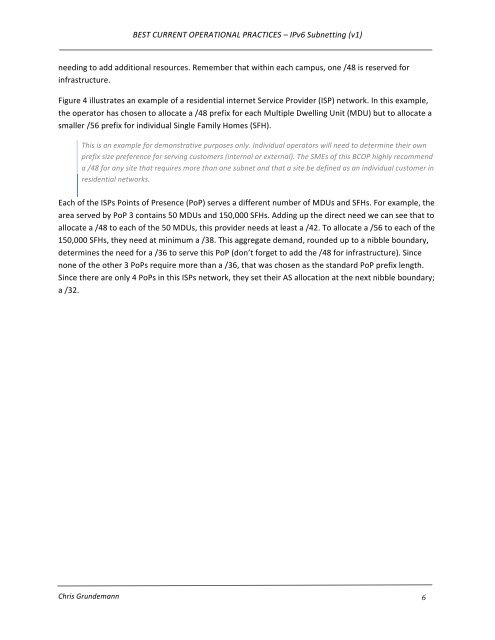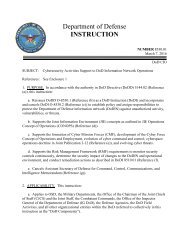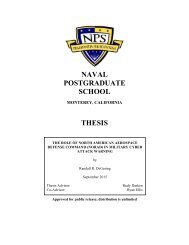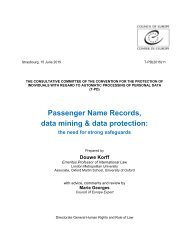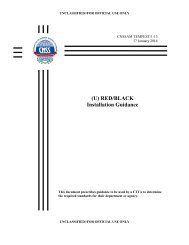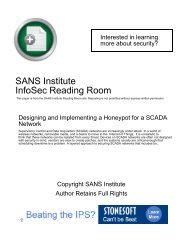BCOP-IPv6_Subnetting
BCOP-IPv6_Subnetting
BCOP-IPv6_Subnetting
You also want an ePaper? Increase the reach of your titles
YUMPU automatically turns print PDFs into web optimized ePapers that Google loves.
BEST CURRENT OPERATIONAL PRACTICES – <strong>IPv6</strong> <strong>Subnetting</strong> (v1) <br />
needing to add additional resources. Remember that within each campus, one /48 is reserved for <br />
infrastructure. <br />
Figure 4 illustrates an example of a residential internet Service Provider (ISP) network. In this example, <br />
the operator has chosen to allocate a /48 prefix for each Multiple Dwelling Unit (MDU) but to allocate a <br />
smaller /56 prefix for individual Single Family Homes (SFH). <br />
This is an example for demonstrative purposes only. Individual operators will need to determine their own <br />
prefix size preference for serving customers (internal or external). The SMEs of this <strong>BCOP</strong> highly recommend <br />
a /48 for any site that requires more than one subnet and that a site be defined as an individual customer in <br />
residential networks. <br />
Each of the ISPs Points of Presence (PoP) serves a different number of MDUs and SFHs. For example, the <br />
area served by PoP 3 contains 50 MDUs and 150,000 SFHs. Adding up the direct need we can see that to <br />
allocate a /48 to each of the 50 MDUs, this provider needs at least a /42. To allocate a /56 to each of the <br />
150,000 SFHs, they need at minimum a /38. This aggregate demand, rounded up to a nibble boundary, <br />
determines the need for a /36 to serve this PoP (don’t forget to add the /48 for infrastructure). Since <br />
none of the other 3 PoPs require more than a /36, that was chosen as the standard PoP prefix length. <br />
Since there are only 4 PoPs in this ISPs network, they set their AS allocation at the next nibble boundary; <br />
a /32. <br />
Chris Grundemann <br />
6


